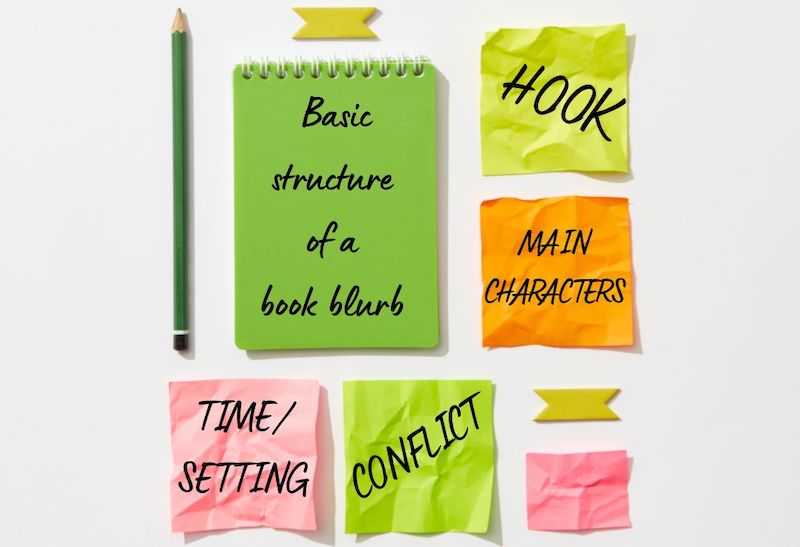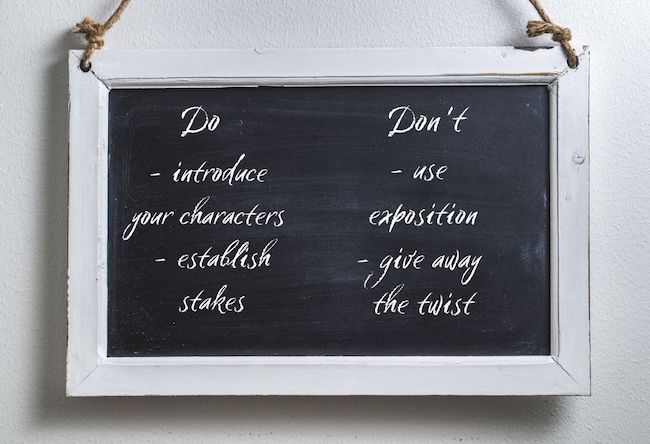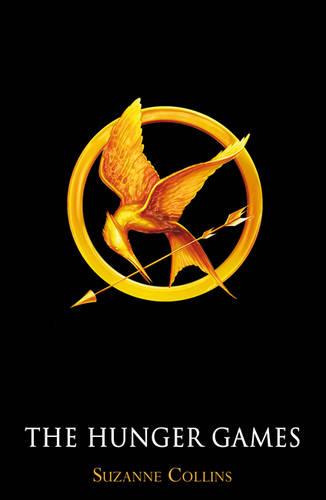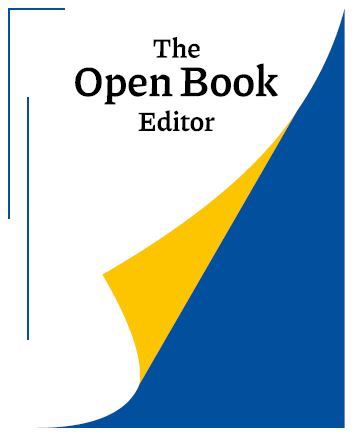A great book blurb is one of the most useful sales tools available to writers. Whenever a potential reader picks up your book—either literally in a bookshop or figuratively online—the blurb is what will entice them to read more. Like with your elevator pitch, you only have a short amount of time to grab a potential reader’s attention. Hence, it’s important to know how to write an exciting book blurb.
You’re probably wondering the same thing about your blurb as you did when faced with writing your book’s synopsis: how is it possible to narrow down your entire book into a few concise paragraphs? If this sounds daunting, don’t worry, you’re not alone. This is a difficult skill for every writer to master. Not sure where to start? Read on to learn more about the dos and don’ts of writing an exciting blurb for your book.
What is a book blurb?
A book blurb is a short description, usually 100-200 words, of your book’s plot. In print publishing, the blurb is on the back of the book (or sometimes the inside fold for a hardback). When you flip a book over to read its short enticing summary before deciding if you want to buy it, you’re reading the blurb!
In e-book publishing or for web sales of physical books, the blurb often appears on the book’s online page. The blurb serves as the book’s central sales feature. This is how readers learn more about the plot of the book (and hopefully feel tempted to buy it)!
What should a book blurb do?
As mentioned above, a book blurb should entice a reader to open the book and read more. A great book blurb will show the reader what’s in the book in an attention-grabbing way, but without giving away too much of the plot. After all, you want your potential reader to read the book to find out how it ends. If you tell them the twist before they even crack it open, why would they need to read the book at all?
Think of a book blurb like a written trailer for a film or TV series. It’s short, gives a sense of the tone of the book, one or more of the major problems the main character(s) will face, as well as its setting and genre, all without giving too much away.
Doesn’t sound easy, right? Well, it’s not. But perhaps we can help break it down for you, so the task of writing your own blurb doesn’t seem quite so daunting.

The basic structure of a book blurb
Most book blurbs follow a similar basic structure. It’s a good idea to stick to this structure—especially as a debut author. If you’ve already written a cover letter, I have some good news: you can actually use parts of your cover letter to help you write your blurb!
These are the four main components of a book blurb:
1. Hook
A hook is so called because its purpose is to hook the reader’s attention. This crucial sentence, typically the first one, should pull a reader into the action, so they feel immediately invested in your story. Your hook should be short, catchy, and show what’s unique about your book.
E.g. The Long Good-Bye by Raymond Chandler — Down-and-out drunk Terry Lennox has a problem: his millionaire wife is dead and he needs to get out of LA fast.
2. Main character(s)
A good book blurb should give your potential reader an idea of the main character or characters. But, while complex characters are important, this is not the place to flesh them out. A few words hinting at who your character is, their personality, and/or what role they play in the story is enough. If you struggle with this, try to only include character details relevant to the plot.
3. Time/Setting
In one form or another, you should include the time and setting in your book’s blurb. This will help to root your reader in the story. It’s especially important in genres such as science fiction, dystopian fiction, and historical fiction. In these genres, your potential readers need added context for the story. However, regardless of your book’s genre, you should find a way to at least imply when and where your story is set.
4. Conflict
Every good story needs a crux or conflict to grip its readers. After all, if nothing exciting happens to your characters, your readers will be bored. Make sure the conflict is clear in your book’s blurb but be careful about giving the resolution away! The point of a blurb is to convince a reader to read the rest of your book to find out how the characters will solve the conflict.
E.g. Harry Potter and the Philosopher’s Stone by J.K. Rowling — In the blurb, the reader finds out how Harry learns he’s a wizard, goes to Hogwarts, and discovers his parents died under mysterious circumstances. The reader then learns that someone is out to kill Harry, too! This strikes the perfect balance between telling the reader enough of the stakes without revealing too much.

Dos and don’ts of a great book blurb:
Now you know the basics of a blurb, let’s dive into the main DOs and DON’TS of crafting an exciting book blurb.
DO introduce your character(s) right away. Potential readers will be spending hours with your characters. Hence, they’ll want to know beforehand whether they are worthy of their time. While you should be brief, try to offer engaging descriptors to make your characters stand out.
E.g. Jim is the only male matchmaker in New York City. AND he’s perpetually lonely and single.
DON’T weigh your book blurb down by describing the overarching themes. While exposition can be an effective narrative tool, your book’s blurb is not the place for it. Remember, you want to keep your blurb short and punchy.
E.g. Moby-Dick is famous (and somewhat infamous) for its huge overarching themes and metaphors. However, if the blurb went into detail about how the whaling industry is a metaphor for man’s desire to tame, control, profit from, and defeat nature, most people would probably never bother reading the book! At its core, we can pare Melville’s novel down to the simple conflict: A crazy sea captain seeks revenge on a notorious white whale. This is what makes people want to read Moby-Dick; we want to see an obsessed man chase a terrifying monster.
DO establish stakes. Talking about the conflict in your novel isn’t enough. You also need to give the reader an idea of what will happen if your characters don’t solve the problem. If there’s nothing at stake for your characters, then there’s nothing at stake for your readers. As a result, your readers won’t care what happens in your story.
E.g. In The Metamorphosis by Franz Kafka, the central conflict could be narrowed down to man must learn why he’s transformed into a bug. However, this doesn’t leave readers with a feeling of dread because there’s no sense of risk. What awful thing will happen to this man if he doesn’t find out why he’s a bug? If you add stakes, it might sound something like man must learn why he’s transformed into a bug or risk living the rest of his days as a creepy crawly.
DON’T give away spoilers. Have you ever watched a movie trailer that gives away so much you feel like you’ve seen the whole film? As mentioned above, the book blurb is the literary equivalent of a trailer. You need to walk a fine line between enticing your reader with the conflict and stakes while not giving too much away. It might seem like common sense, but it’s worth repeating: don’t give away major spoilers or the twists of your book in the blurb!

Examples of great book blurbs
There you have it, writing a book blurb made easy! (Ok, easier…)
However, if you’re still feeling unsure about what makes a great book blurb (and it’s completely natural to feel this way), just grab a few of your favourite books off your shelf and read their blurbs. Focus on the ones that you enjoy the most. Ask yourself: what is it that makes these book blurbs so appealing? That mix of intrigue and excitement you’re feeling is what you’re trying to replicate in the readers who read your blurb.
Here are a few excellent examples of blurbs from well-known books to help get you started. Notice how all three examples are two short paragraphs (one that sets the scene and one that sets the stakes) and most are limited to a few sentences.
The Hunger Games by Suzanne Collins

Set in a dark vision of the near future, a terrifying reality TV show is taking place. Twelve boys and twelve girls are forced to appear in a live event called The Hunger Games. There is only one rule: kill or be killed.
When sixteen-year-old Katniss Everdeen steps forward to take her younger sister’s place in the games, she sees it as a death sentence. But Katniss has been close to death before. For her, survival is second nature.
Crazy Rich Asians by Kevin Kwan

When New Yorker Rachel Chu agrees to spend the summer in Singapore with her boyfriend, Nicholas Young, she envisions a humble family home and quality time with the man she hopes to marry. But Nick has failed to give his girlfriend a few key details. One, that his childhood home looks like a palace; two, that he grew up riding in more private planes than cars; and three, that he just happens to be the country’s most eligible bachelor.
On Nick’s arm, Rachel may as well have a target on her back the second she steps off the plane, and soon, her relaxed vacation turns into an obstacle course of old money, new money, nosy relatives, and scheming social climbers.
This Time Tomorrow by Emma Straub

On the eve of her 40th birthday, Alice’s life isn’t terrible. She likes her job, even if it isn’t exactly the one she expected. She’s happy with her apartment, her romantic status, her independence, and she adores her lifelong best friend. But her father is ailing, and it feels to her as if something is missing.
When she wakes up the next morning, she finds herself back in 1996, reliving her 16th birthday. But it isn’t just her adolescent body that shocks her, or seeing her high school crush, it’s her dad: the vital, charming, 40-something version of her father with whom she is reunited. Now armed with a new perspective on her own life and his, some past events take on new meaning. Is there anything that she would change if she could?


